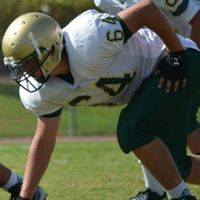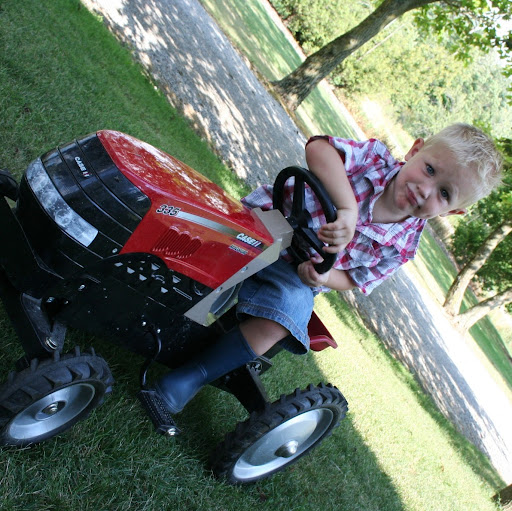James R Devries
age ~54
from Gurnee, IL
- Also known as:
-
- James L Devries
- James R Vries
- James R Devires
- Jas Devries
- Devries Jas
- Phone and address:
- 335 West St, Gurnee, IL 60031
James Devries Phones & Addresses
- 335 West St, Gurnee, IL 60031
- Three Lakes, WI
- Lake Villa, IL
- 18789 Marion Dr, Lake Villa, IL 60046
Isbn (Books And Publications)

Race and Kinship in a Midwestern Town: The Black Experience in Monroe, Michigan, 1900-1915
view sourceAuthor
James E. DeVries
ISBN #
0252010841




Livestock for a Small Earth: The Role of Animals in a Just and Sustainable World
view sourceAuthor
James Devries
ISBN #
0929765281
Resumes

James Jimbo Devries
view source
James Devries
view source
James Devries
view source
Professor Emeritus Nat Sci And Math
view sourceWork:
Lancaster Bible Col Div Arts/Sci
Professor Emeritus Nat Sci and Math
Professor Emeritus Nat Sci and Math

James Devries
view source
James Devries
view source
James Devries
view source
James Devries
view sourceLocation:
United States
Name / Title
Company / Classification
Phones & Addresses
Trillium Home Improvements
Storm Windows & Doors
Storm Windows & Doors
989 Highway #8, Stoney Creek, ON L8E 5H9
9055787485
9055787485
Manager
Hopkins Printing & Envelope Company
Bookbinding/Related Work
Bookbinding/Related Work
120 W Laura Dr, Addison, IL 60101
PO Box 389, Addison, IL 60101
6305438227
PO Box 389, Addison, IL 60101
6305438227
Secretary
Stenograph
Computer Software · Custom Computer Programing Mfg Communications Equipment Mfg Office Machines · Mfg Magnetic/Optical Recording Media · Mfg Office Machines
Computer Software · Custom Computer Programing Mfg Communications Equipment Mfg Office Machines · Mfg Magnetic/Optical Recording Media · Mfg Office Machines
596 Lamont Rd, Elmhurst, IL 60126
96 Lamont Rd, Elmhurst, IL 60126
6305325100, 8003234247, 6302791847
96 Lamont Rd, Elmhurst, IL 60126
6305325100, 8003234247, 6302791847
President
LITIGATION SCIENCES, INC
1500 Bishop Ct, Mount Prospect, IL 60056
467 Willow Rd, Winnetka, IL 60093
467 Willow Rd, Winnetka, IL 60093
Principal
304 PARK, LLC
Nonclassifiable Establishments
Nonclassifiable Establishments
120 W Laura Dr, Addison, IL 60101
Principal
366 HIGHVIEW, LLC
Nonclassifiable Establishments
Nonclassifiable Establishments
120 W Laura Dr, Addison, IL 60101
Us Patents
-
Disposable Liquid Applicator
view source -
US Patent:41404092, Feb 20, 1979
-
Filed:Sep 2, 1977
-
Appl. No.:5/830168
-
Inventors:James H. DeVries - McHenry IL
-
Assignee:Baxter Travenol Laboratories, Inc. - Deerfield IL
-
International Classification:A47L 1317
-
US Classification:401132
-
Abstract:A disposable liquid applicator is provided in which the liquid to be dispensed is carried within a prescored container. Absorbent material is fastened to the container overlying the prescored portion. The container and the absorbent material cooperate to cause the liquid to be dispensed into the absorbent material when the container is bent away from the prescored portion and about itself.
-
Centrifugal Liquid Processing System
view source -
US Patent:41461720, Mar 27, 1979
-
Filed:Oct 18, 1977
-
Appl. No.:5/843296
-
Inventors:Herbert M. Cullis - Silver Spring MD
James H. DeVries - McHenry IL -
Assignee:Baxter Travenol Laboratories, Inc. - Deerfield IL
-
International Classification:B04B 502
-
US Classification:233 26
-
Abstract:An intervivos blood processing system for centrifugally separating red blood cell and platelet components from whole blood includes a separation chamber for separating red blood cell and white blood cell components, and a collection chamber for collecting platelet components. Each chamber is formed with closely-spaced sidewalls defining respective generally flat interior chambers therebetween and is mounted on a rotatably driven carriage substantially tilted from a parallel arrangement with respect to the carriage axis of rotation at a slight angle whereby the red blood cell component is caused to collect in shoulder regions of the separation chamber and the platelet component is caused to collect on the sidewalls of the collection chamber. The processing chambers are preferably each formed from sheets of flexible hemo-compatible plastic sealed about their periphery to define the chambers therebetween, and are received on the carriage between removable carrier plates having recesses which define the shape of the chambers under fluid pressure.
-
Prepackaged, Self-Contained Fluid Circuit Module
view source -
US Patent:43794521, Apr 12, 1983
-
Filed:Dec 6, 1979
-
Appl. No.:6/100975
-
Inventors:James H. DeVries - McHenry IL
-
Assignee:Baxter Travenol Laboratories, Inc. - Deerfield IL
-
International Classification:A61M 500
-
US Classification:604 6
-
Abstract:A prepackaged, self-contained fluid circuit module is selectively movable by an operator into and out of operative association with one or more pump rotors. The module includes a housing which supports two or more flexible conduits, which together define a prearranged fluid circuit. Portions of the flexible fluid conduits are outwardly disposed from the housing in upright, freestanding positions, even when the module is out of operative association with the pump rotors. The upright portions are purposely arranged relative to each other to facilitate only a particular operative relationship between the fluid circuit and the pump rotors when the module is subsequently moved into operative association therewith.
-
Blood Processing Assembly Including A Prepackaged Fluid Circuit Module
view source -
US Patent:46378138, Jan 20, 1987
-
Filed:Sep 27, 1982
-
Appl. No.:6/424823
-
Inventors:James H. DeVries - McHenry IL
-
Assignee:Baxter Travenol Laboratories, Inc. - Deerfield IL
-
International Classification:A61F 216
-
US Classification:604 6
-
Abstract:The monitor and fluid circuit assembly is used with a blood processing apparatus which is adapted for separating platelets from whole blood. The assembly is easily and simply attached to the apparatus and includes a holder, a plurality of flexible tubings held in and extending through the holder, monitor devices fixed within the holder and series coupled to various ones of the tubings and at least one tubing having a transparent wall section which is positioned adjacent an optical sensor of the apparatus. Several tubings extend in loops from the holder and are adapted for being received over and forming part of peristaltic pumps of the apparatus so that fluid can be pumped through the tubings. Other portions of some of the tubings extending from the holder are held in an umbilicus which is received through a rotatable holder in a centrifuge device of the apparatus. The plastic bag/receptacles are connected to the ends of these tubings and are adapted to be received in the centrifuge device for the centrifuging of fluids therein.
-
Method And Apparatus For Processing Blood
view source -
US Patent:41856295, Jan 29, 1980
-
Filed:Oct 18, 1977
-
Appl. No.:5/843222
-
Inventors:Herbert M. Cullis - Silver Spring MD
James H. DeVries - McHenry IL
David A. Lohr - Ellicott City MD
Rodolfo R. Rodriquez - Columbia MD
Michael B. Uffer - Baltimore MD -
Assignee:Baxter Travenol Laboratories, Inc. - Deerfield IL
-
International Classification:A61M 500
B04B 1100 -
US Classification:128214R
-
Abstract:The blood processing method, and the apparatus for performing the steps of the method are utilized in separating whole blood into its components and include the steps of, or component parts of the apparatus for carrying out these steps of: pumping whole blood from a donor; passing the whole blood through a first chamber in a centrifuge device: centrifuging the whole blood in the centrifuge device to cause sedimentation of red blood cells from the whole blood in, and separation of platelet rich plasma from the whole blood in, the first chamber; pumping the separated platelet rich plasma from the first chamber and out of the centrifuge device where it is monitored and then back into the centrifuge device and through a second chamber in the centrifuge device where the platelet rich plasma is centrifuged to cause sedimentation of the platelets therein while passing the remaining blood fluid though the first chamber and back to the donor; recombining the plasma passed through the second chamber with the blood fluid passed through the first chamber for return to the donor; monitoring the platelet rich plasma outisde of the centrifuge device and sensing the presence of red blood cells in the platelet rich plasma; stopping and then reversing movement of the platelet rich plasma mixed with red blood cells when a mixture is sensed to return the mixture of platelet rich plasma mixed with red blood cells to the first chamber for separation of the blood components; adjusting the difference in volumetric flow rates of the pump for the whole blood pump and the pump for platelet rich plasma in response to the sensing of red blood cells; repeating the above steps until a desired volume of whole blood has been processed, and stopping operation of the centrifuge device and removing the second chamber with platelets therein from the apparatus.
-
Fluid Pumping Assembly Including A Prepackaged Fluid Circuit Module
view source -
US Patent:45265151, Jul 2, 1985
-
Filed:Sep 27, 1982
-
Appl. No.:6/424819
-
Inventors:James H. DeVries - McHenry IL
-
Assignee:Baxter Travenol Laboratories, Inc. - Deerfield IL
-
International Classification:F04B 4312
F04B 4508 -
US Classification:417 63
-
Abstract:A fluid pumping assembly includes a prepackaged, self-contained fluid circuit module which is selectively movable by an operator into and out of operative association with one or more pump rotors of an associated apparatus. The module includes a housing which supports two or more flexible conduits, which together define a prearranged fluid circuit. Portions of the flexible fluid conduits are outwardly disposed from the housing in upright, freestanding positions, even when the module is out of operative association with the pump rotors. The upright portions are purposely arranged relative to each other to facilitate only a particular operative relationship between the fluid circuit and the pump rotors when the module is subsequently moved into operative association therewith.
Medicine Doctors

James T. Devries
view sourceSpecialties:
Cardiovascular Disease
Work:
Dartmouth-HitchcockDartmouth-Hitchcock Medical Center Cardiovascular
1 Medical Ctr Dr, Lebanon, NH 03756
6036505000 (phone), 6036505267 (fax)
1 Medical Ctr Dr, Lebanon, NH 03756
6036505000 (phone), 6036505267 (fax)
Education:
Medical School
Georgetown University School of Medicine
Graduated: 1999
Georgetown University School of Medicine
Graduated: 1999
Procedures:
Angioplasty
Echocardiogram
Pacemaker and Defibrillator Procedures
Cardioversion
Echocardiogram
Pacemaker and Defibrillator Procedures
Cardioversion
Conditions:
Ischemic Heart Disease
Acute Myocardial Infarction (AMI)
Angina Pectoris
Aortic Valvular Disease
Atrial Fibrillation and Atrial Flutter
Acute Myocardial Infarction (AMI)
Angina Pectoris
Aortic Valvular Disease
Atrial Fibrillation and Atrial Flutter
Languages:
English
Description:
Dr. Devries graduated from the Georgetown University School of Medicine in 1999. He works in Lebanon, NH and specializes in Cardiovascular Disease. Dr. Devries is affiliated with Dartmouth Hitchcock Medical Center.

James Devries
view source
James DeVries
view source
James DeVries
view source
James Devries
view source
James DeVries
view source
James DeVries
view source
James DeVries
view source
James DeVries
view sourceMyspace
Googleplus

James Devries
Education:
North Georgia College and State University - Business

James Devries

James Devries

James Devries

James Devries

James Devries

James Devries

James Devries
Flickr
Youtube
Classmates

James Devries
view sourceSchools:
Wahpeton High School Wahpeton ND 1957-1961
Community:
Anna Rempfer, Jenine Holtz, Thomas Braun, Dave Buechler

James Devries
view sourceSchools:
Fraser Valley Christian High School Surrey Saudi Arabia 1976-1980
Community:
Art Boersma

James James (Devries)
view sourceSchools:
Randolph Christian School Randolph WI 1978-1987, Randolph High School Randolph WI 1987-1991
Community:
Karen Hildebrandt, Missy D, Rosemary Burie

James Devries
view sourceSchools:
Rudolph Elementary School Rudolph WI 1978-1987
Community:
Melissa Rybicki, Kathy Russell, Bill Prentice, Amy Dammann

James Devries
view sourceSchools:
South Christian High School Grand Rapids MI 1963-1967
Community:
Jordan Leys

James Devries (Brown)
view sourceSchools:
City High School Grand Rapids MI 1975-1978
Community:
John Hornak, Molly Richter, George Banfill

James Devries
view sourceSchools:
Rainier High School Rainier OR 1973-1977
Community:
Dianna Higley, Jerry Coffelt, Pat Shaw, Tamera Dunn

James Devries
view sourceSchools:
William Alexander Middle School 51 Brooklyn NY 1976-1980
Community:
Sandra Ambrosio, Richard Navas, Dolores Procino, Gloria Cohen, Karen Miller, Joe Husson
Get Report for James R Devries from Gurnee, IL, age ~54

















